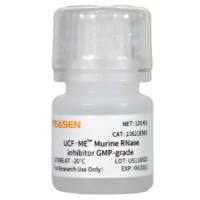Macrophages play a key role in the innate immune response and help to direct the acquired immune response. Early in the innate immune response, they produce reactive oxygen species and pro-inflammatory cytokines and chemokines to drive inflammation and are referred to as “classically activated” or “killer” macrophages (M1). During the resolution phase of inflammation, they switch to what is known as an “alternatively activated” phenotype or “healer” macrophage (M2) and contribute to debris scavenging, angiogenesis, and wound healing. M1 macrophages are activated by treatment with IFNγ or LPS and M2 macrophages are activated by treatment with Th2 cytokines IL-4 or IL-13 and the M2 phenotype switch can be enhanced by IL-10. Macrophages can also be skewed during differentiation in vitro, and the resultant phenotype depends upon the cytokine provided to support their differentiation. In murine macrophages, MCSF promotes differentiation to an M1 phenotype, GM-CSF promotes differentiation to an M2 phenotype and IL-3 promotes differentiation into a profoundly M2 skewed phenotype. A defining feature of the phenotype of murine M1 versus M2 macrophages is how they metabolize L-arginine. In response to an inflammatory stimulus like LPS, M1 macrophages produce inducible nitric oxide synthase (iNOS) which uses L-arginine as a substrate to produce nitric oxide (NO). M2 macrophages constitutively produce the enzyme arginase I (argI), which sequesters L-arginine from iNOS and results in the production of ornithine and downstream polyamines and L-proline. M1 macrophages also produce relatively higher levels of pro-inflammatory IL-12 and lower levels of anti-inflammatory IL-10 relative to M2 macrophages. In this chapter, we describe in vitro derivation of polarized bone marrow macrophages and methods to analyze the resulting phenotype including Q-PCR, Western blotting, and enzyme assays to determine argI and iNOS expression and activity, as well as production of IL-12p40 and IL-10 and determination of IL-12/IL-10 ratios. Production of iNOS, NO, IL-12p40, and IL-10 are measured after treatment with LPS.






